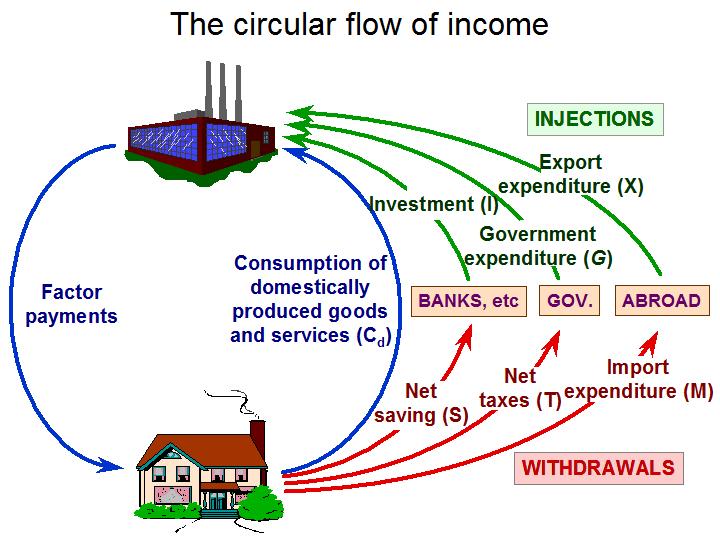 At the Mansion House dinner on 15 June, the Chancellor, George Osborne, and the Governor of the Bank of England, Sir Mervyn King, announced a new monetary policy initiative to increase bank credit. The idea is to stimulate borrowing by both firms and households and thereby boost aggregate demand.
At the Mansion House dinner on 15 June, the Chancellor, George Osborne, and the Governor of the Bank of England, Sir Mervyn King, announced a new monetary policy initiative to increase bank credit. The idea is to stimulate borrowing by both firms and households and thereby boost aggregate demand.
There are two parts to the new measures:
1. Funding for lending. The aim here is to provide banks with cheap loans (i.e. at below market rates) on condition that they are used to fund lending to firms and households. Some £80 billion of loans, with a maturity of 3 to 4 years, could be made available to banks under the scheme. The details are still being worked out, but the scheme could work by the Bank of England supplying Treasury bills to the banks in return for less secure assets. The banks could then borrow against these bills in the market in order to lend to customers.
2. Providing extra liquidity to banks through six-month repos. The Bank of England will begin pumping up to £5bn a month into the banking system to improve their liquidity. This is an activation of the ‘Extended Collateral Term Repo Facility’ (see also), which was created last December, to provide six-month liquidity to banks against a wide range of collateral.
 But whilst it is generally accepted that a lack of borrowing by firms and households is contributing to the slowdown of the UK economy, it is not clear how the new measures will solve the problem.
But whilst it is generally accepted that a lack of borrowing by firms and households is contributing to the slowdown of the UK economy, it is not clear how the new measures will solve the problem.
In terms of the supply of credit, banks have become more cautious about lending because of the increased risks associated with both the slowdown in the UK economy and the euro crisis. They claim that the issue is not one of a shortage of funding for lending, but of current uncertainties. They are thus likely to remain reluctant to lend, despite the prospect of extra loans from the Bank of England.
In terms of the demand for credit, both businesses and consumers remain cautious about borrowing. Even if bank loans are available, firms may not want to invest given the current uncertainties about the UK, eurozone and world economies. Consumers too may be reluctant to borrow more when people’s jobs may be at stake or at least when there is little prospect of increased wages. Even if banks were willing to lend more, you cannot force people to borrow.
Britain fights euro zone threat with credit boost Reuters, Matt Falloon and Sven Egenter (14/6/12)
Debt crisis: emergency action revealed to tackle ‘worst crisis since second world war’ Guardian, Larry Elliott, Jill Treanor and Ian Traynor (14/6/12)
Q&A: Funding for lending scheme Financial Times, Norma Cohen (15/6/12)
Bank lending plan: How will it work? BBC News (15/6/12)
Bank of England’s loans to high street banks start next week Guardian, Phillip Inman (15/6/12) Mervyn King: Bank of England and Treasury to work together The Telegraph (15/6/12)
Mervyn King: Bank of England and Treasury to work together The Telegraph (15/6/12) Bank of England offers £80bn loans Channel 4 News, Sarah Smith (15/6/12)
Bank of England offers £80bn loans Channel 4 News, Sarah Smith (15/6/12)
Bank funding scheme plans unveiled Independent, Holly Williams (15/6/12)
Banking: King hits panic button Independent, Ben Chu (15/6/12)
Bankers raise doubts on credit scheme Financial Times, Patrick Jenkins and Sharlene Goff (15/6/12)
We should not pin our hopes on Britain’s plan A-plus Financial Times, Martin Wolf (15/6/12)
Throwing money at banks won’t solve economic crisis, Ed Balls says Guardian, Patrick Wintour (15/6/12)
UK lending plan faces risk of low take-up BloombergBusinessweek, Robert Barr (15/6/12)
Will Bank of England’s new lending schemes work? BBC News, Robert Peston (15/6/12)
Bank and Treasury’s plan A-plus for UK BBC News, Stephanie Flanders (15/6/12)
Questions
- How would the schemes incentivise banks to lend more?
- Explain what is meant by the Extended Collateral Term Repo Facility. How similar is it to the long-term repo operations of the ECB (see the news item More bank debt to ease bank debt)?
- What factors are likely to determine the take-up of loans from banks?
- Will the new arrangements have any implications for taxpayers? Explain.
- To what extent are fiscal and monetary policy currently complementary?
- What is the significance of calling the new measures ‘Plan A-plus’? What would ‘Plan B’ be?